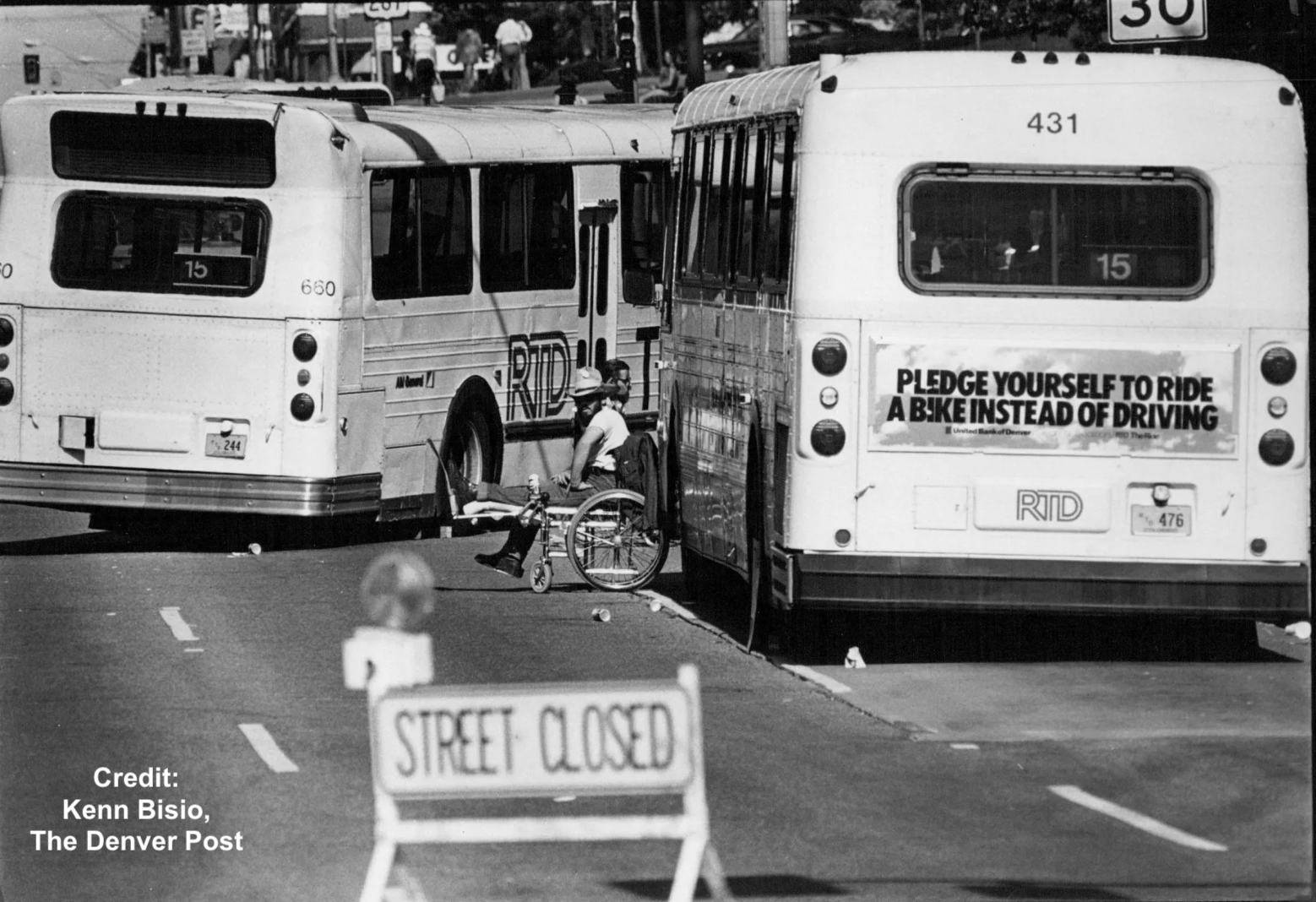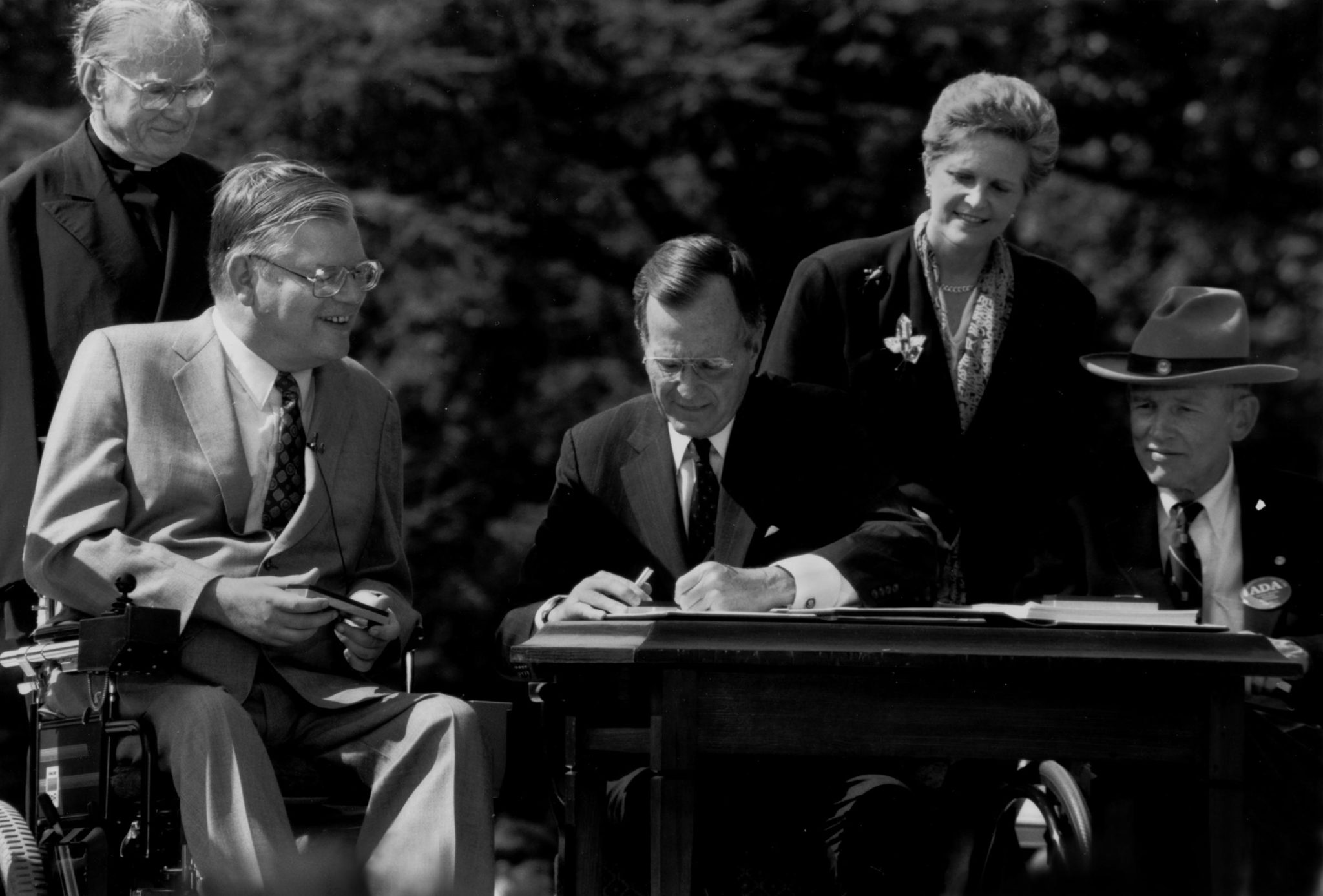It’s now a given that every bus, train, or light rail you board will have spaces for individuals with disabilities. Did you know that hasn’t always been the case?
Only 40 years ago, boarding a bus in Denver was a near impossible adventure for those living with disabilities. The fight to make public transportation accessible, both here in Colorado and across the country, took more than a decade to reach its goals. Many people don’t know that fight began right here in Denver with the “Gang of 19”. On the 45th anniversary of the RTD protest, we celebrate the impact that these individuals had in Colorado and beyond.
The History
In the ’70s, taking public transit in Denver as a person with a disability was near impossible. According to articles at the time, RTD’s fleet of hundreds only had 12 buses equipped with hydraulic lifts and locking safety clamps for individuals with wheelchairs. One of PASCO’s founders, Barry Rosenberg, was among those on the frontlines fighting for this to change. With approximately 8,000 individuals living with disabilities in Denver, Rosenberg said it could take six hours for a person with disabilities to make it to their destination.
If folks didn’t have access to a car and didn’t have six hours or more of their day to spare, they frequently had no way to get around. The cost of accessible ride options often kept them from being options at all. In the ’70s, it could cost anywhere from $16 to $35 a ride – that’s anywhere from $72 to $150 when adjusted for inflation today. At the time, the state only gave individuals with disabilities $10 a month for personal needs. This wasn’t enough to cover a single ride – even with the cheapest option.

In 1978, RTD announced that a new fleet of over 250 buses would be rolling out on the streets of Denver. None of them were wheelchair accessible. Atlantis, an independent living company founded by Reverend Wade Blank and Rosenberg, sued in response. However, the court case did not go in their favor. The federal court ruling stated that RTD was not violating the constitutional rights of the city’s handicapped. In response, Atlantis created an offshoot group focused on grassroots advocacy efforts called ADAPT (American Disabled for Attendant Programs Today). The group took to the streets to challenge this ruling.

The Protest
On July 5, 1978, 19 individuals in wheelchairs surrounded two RTD buses during the morning rush hour. They chanted, “we will ride!” Rev. Blank spoke with reporters at the time of the protest and said, “If you’re being taxed to ride the bus, you should be able to ride the bus as you so feel.” When police arrived on the scene they opted not to arrest any of the individuals in wheelchairs blocking the bus lanes. Newspapers at the time quoted one police sergeant saying, “we don’t want to be the fall guys on this.” Instead, they arrested two local counselors.
The protest led to RTD agreeing to make one-third of their buses wheelchair accessible. Although this was a vast improvement to what was previously a very inaccessible transit system, it still wasn’t enough. The local and national media coverage this protest garnered showed the nation the struggles individuals with disabilities were facing. In response, groups in other states began protesting as well.
The Present
After 12 years of protests, court battles, and demonstrations, President George H.W. Bush signed the Americans with Disabilities Act (ADA) into law on July 26, 1990. It prohibited discrimination against people with disabilities in employment, public accommodations, communications, and transportation across the country. You can learn more about the ADA here. With this law, people with disabilities were guaranteed to have the same rights, access, and opportunities as anyone else. Now, every bus, train, and light rail in the nation is required to be accessible to everyone.

When you use public transportation and use or see those accessible spaces, tip your hat to the Gang of 19.


